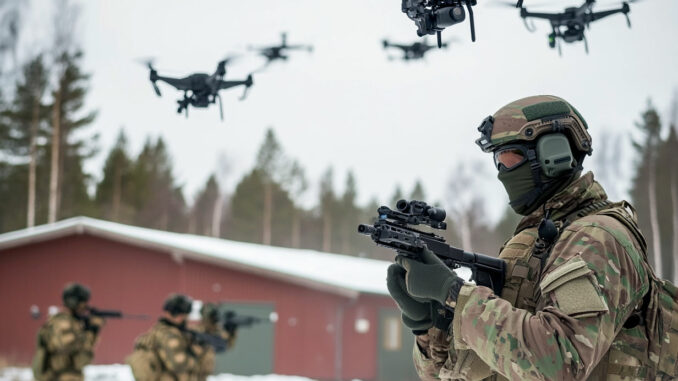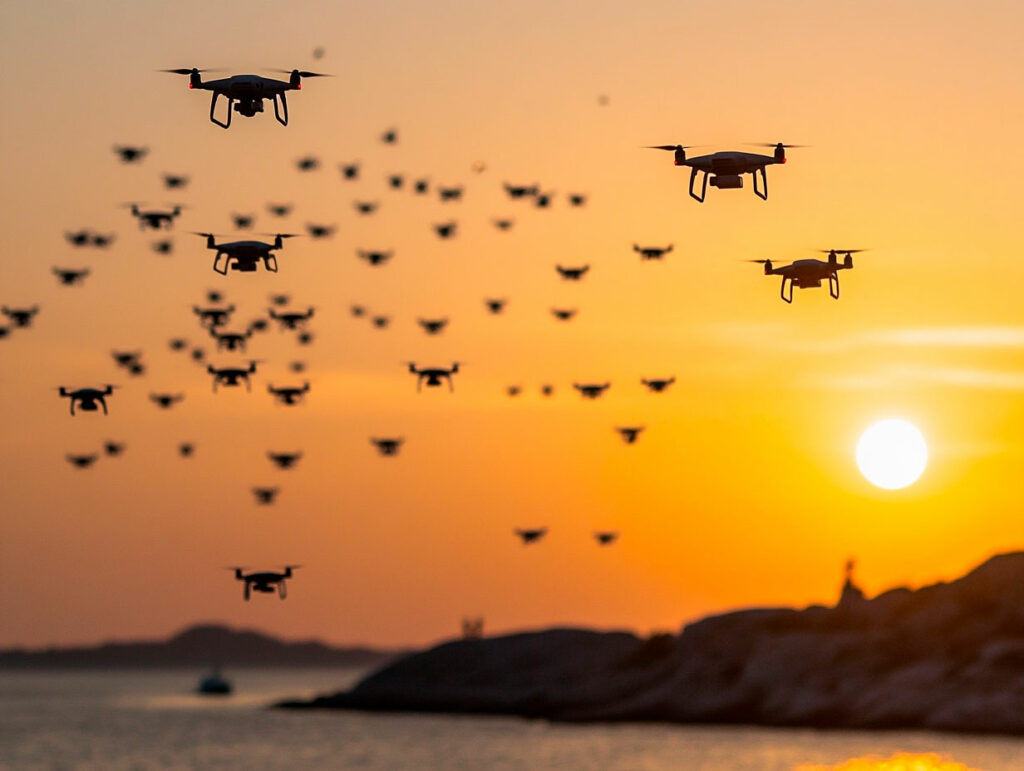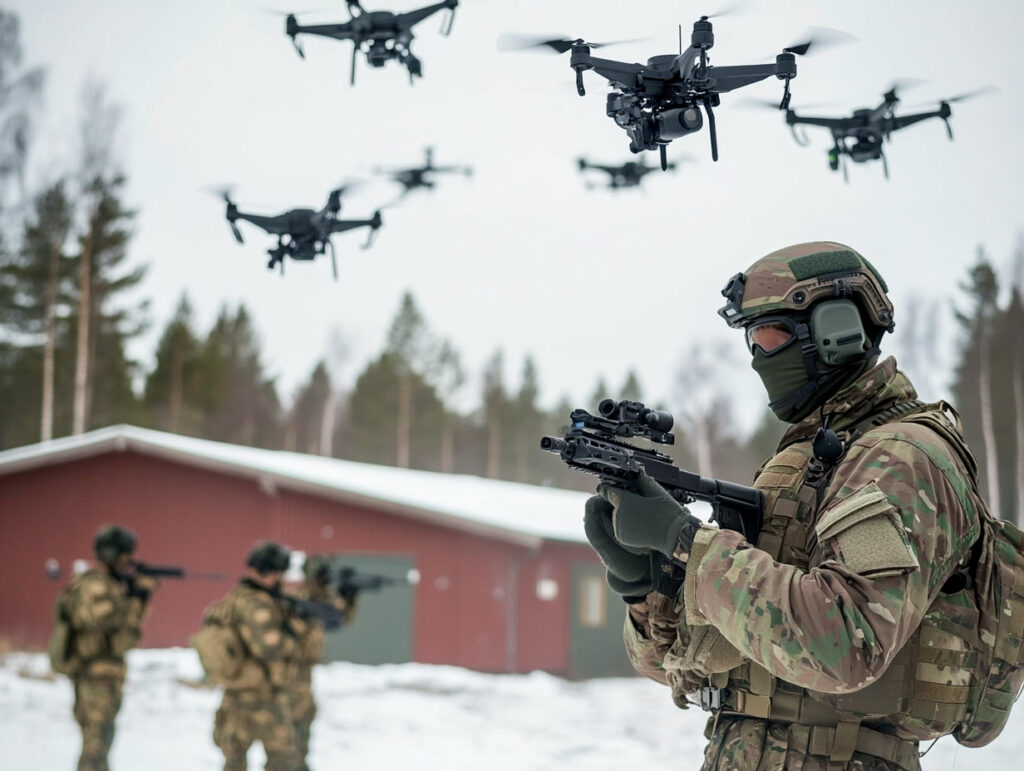
Sweden unveils intelligent drone swarm technology designed to enhance reconnaissance and surveillance for its armed forces.
Sweden has announced the development of a drone swarm designed to enhance the reconnaissance and surveillance capabilities of its armed forces. These drones, equipped with artificial intelligence and advanced sensors, provide commanders with a real-time overview, enabling rapid decision-making. The project, carried out by Saab in collaboration with the Swedish army and research agencies, is part of a global trend where the use of drone swarms is becoming a strategic priority. However, challenges remain, not least their limited autonomy, often restricted to 30 minutes of flight time.
A strategic project for the Swedish armed forces
Sweden has presented an ambitious project to integrate drone swarms into its military operations. These drones, grouped in autonomous formations, are intended to assist troops on the ground and in the air. In a public demonstration, a dozen quadcopters flew over snow-covered forests, transmitting high-resolution images to operators on the ground.
The drones use artificial intelligence algorithms to rapidly analyze their environment and transmit usable data. This technology gives commanders an instant view of the areas under surveillance, improving tactical decision-making. Sweden’s Minister of Defense, Pal Jonson, said the project aims to enhance perimeter security and provide a strategic advantage in complex environments.
The project involves Saab, the Swedish Defense Material Administration and the Swedish Defense Research Agency. Saab has designed command and control software that enables a single operator to direct multiple swarms using a mobile device, optimizing human resource management.

Technology developed in record time
The speed of development of this technology is noteworthy. According to Saab, the drone swarm was designed in just a few months, a remarkable achievement given the technological challenges involved. Each drone in the swarm is equipped with specific sensors, such as thermal cameras or long-range communication systems. These devices provide operational flexibility, adapting missions to various tactical needs.
However, their limited autonomy remains a challenge. Light UAVs, often powered by lithium-ion batteries, can only fly for around 30 minutes. This factor reduces their effectiveness in extended missions, particularly in extended environments or long-duration operations.
A global trend: drone swarms in the armed forces
The use of drone swarms is not unique to Sweden. Several countries, including the USA, China and Israel, are investing heavily in this technology. These devices offer significant advantages, such as reduced operational costs and improved resilience in the face of conventional threats.
In Ukraine, drones have become a strategic priority. Ukrainian forces aim to adopt swarm formations by 2025, moving from a “one drone, one operator” model to coordinated deployments. This shift requires investment in advanced autonomy and communications technologies.
In the NATO context, interest in drones has increased following incidents of underwater sabotage in the Baltic Sea. These devices could be used to monitor critical infrastructures, thereby reinforcing regional security.
Geopolitical and economic implications
Sweden, now a member of NATO, is positioning its drones as an innovative solution to emerging threats. The technology could also attract commercial interest, with potential sales to other alliance members. Saab has confirmed that several countries have already expressed interest in these systems.
Development and production costs are also a key factor. A military quadricopter equipped with advanced sensors costs an average of €50,000 to €100,000, not including expenditure on software development or command infrastructure. The global military drone market, valued at 12.5 billion euros in 2023, is expected to reach 20 billion euros by 2030, according to estimates.

Long-term challenges and prospects
Despite their potential, drone swarms raise technical challenges. Limited autonomy, electronic interference and vulnerability to cyberattacks are all obstacles to be overcome. For example, modern jamming systems can neutralize entire swarms by disrupting their communications.
From an operational point of view, drones will need to be integrated into an overall military strategy, combining surveillance, intelligence and threat neutralization. Their success will depend on their ability to operate in contested environments and to evolve in the face of opposing countermeasures.
War Wings Daily is an independant magazine.